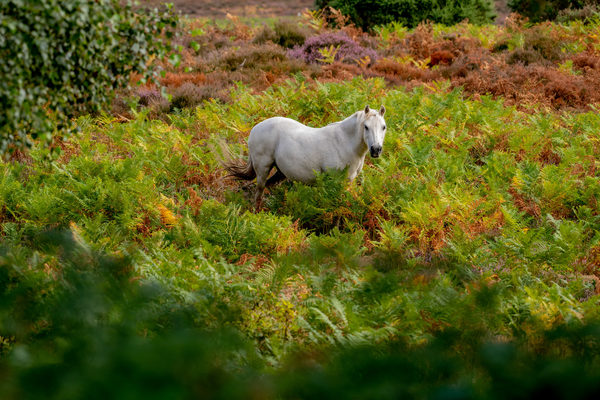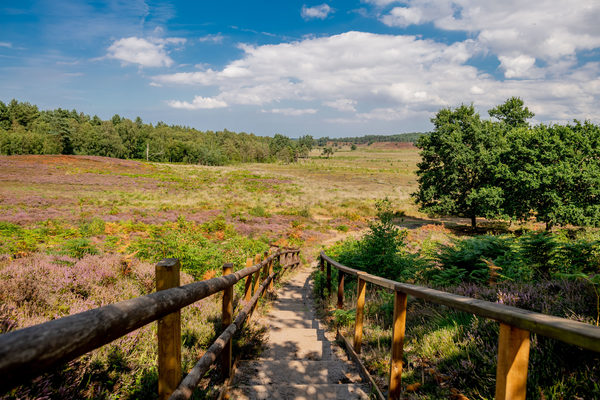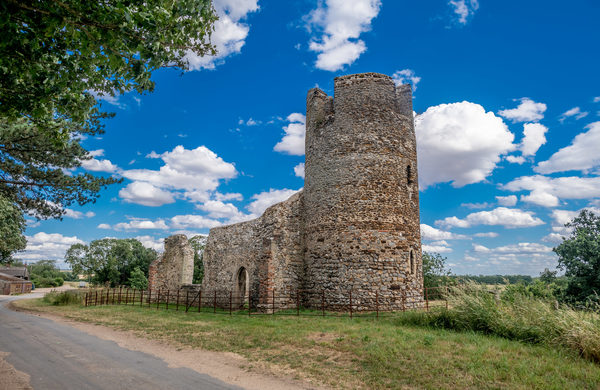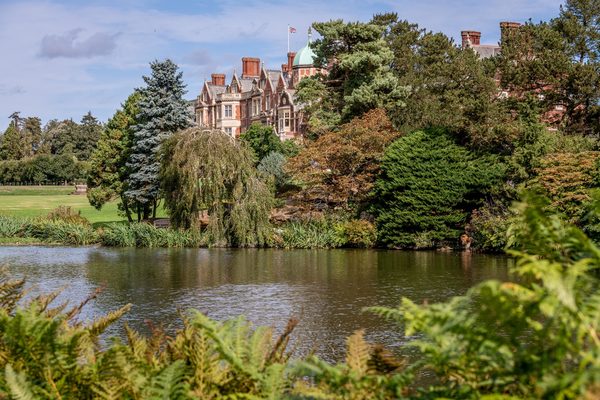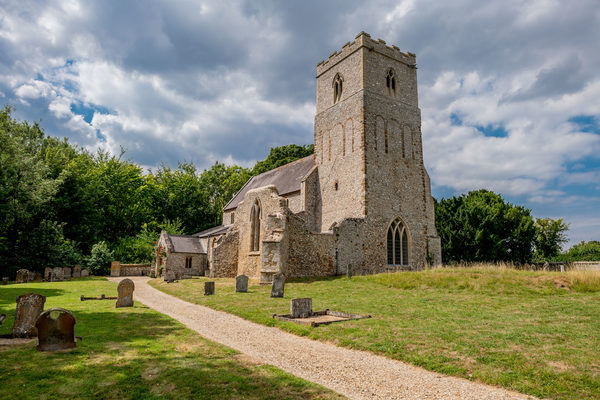In its time Rising has served as a hunting lodge, royal residence, and for a brief time in the 18th century even housed a mental patient. The most famous period in its history was when it came to the mother of Edward III, Queen Isabella, following her part in the murder of her husband Edward II. The castle passed to the Howard family in 1544 and it remains in their hands today, the current owner being a descendant of William D'Albini II, the Norman baron who raised the castle.
The great earthworks which form the whole site and extent of the castle cover an area of between 12 and 13 acres, and comprise a main central enclose, or inner bailey, and two lesser outworks respectively to east and west. The central enclosure, in shape something between a circle and an oval about 73m north to south and 64m east to west, has a circumference around its crest of about 320m, and is far and away the strongest, with its banks, even now after the cumulative and combined effects of erosion and in-filling, rising to a height of some 18m.
Within the inner bailey can be found the remains of an early Norman Church. Discovered in the early nineteenth century when the bailey was cleared of accumulated sand and soil, it is the earliest building within the site, pre-dating even the castle itself. Dating from around the late eleventh century it is thought to be the first parish church of Rising (no earlier church has been discovered) and was probably replaced by the current twelfth-century church when the castle was founded.
It was built soon after 1138 by William d'Aubigny II, who had risen through the ranks of the Anglo-Norman nobility to become the Earl of Arundel. With his new wealth, he constructed Castle Rising and its surrounding deer park, a combination of fortress and palatial hunting lodge.
During the 15th century, the castle became increasingly valued for its hunting facilities rather than its military defences. It fell into disrepair and, despite the construction of new living quarters and service facilities, by the middle of the 16th century it was derelict. Henry VIII sold the property to Thomas Howard, the Duke of Norfolk, and most of the castle buildings were demolished. It was not until the 19th century, when Mary and Fulke Greville Howard inherited the property, that the castle was renovated and restored. Victorian scholars examined the site, and it was opened to the public. In 1958 the castle passed into the custody of the state, which carried out further stabilisation work and a programme of archaeological investigation. In 1998 English Heritage passed the management of the site back to its current owner, Baron Howard of Rising, who continues to operate the castle as a tourist attraction.
